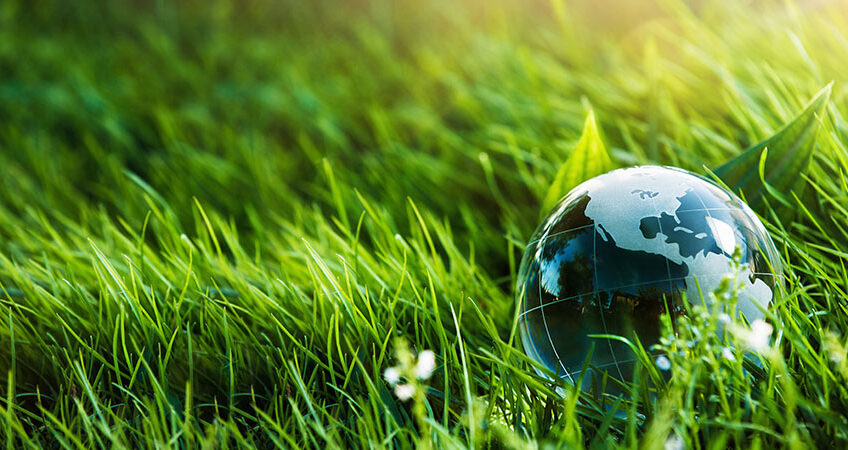Concerns about water usage across the country have some homeowners considering a switch to artificial turf, but the beneficial impact of natural lawns extends far beyond water use. If you’re thinking about making a change from live grass to synthetic alternatives, reconsider the environmental and personal benefits that natural lawns bring to your life.
Natural turf grasses are sustainable, environmentally sound choices that deliver multiple benefits artificial lawns can’t match. The following are a few of the many reasons to keep and value your natural lawn:
WATER FILTER.
According to PLCAA, a key environmental benefit of a healthy lawn is improved water quality. Lawns help filter rainwater into the soil, preventing erosion and runoff of potential contaminants into water sources. The association notes scientific research showing that turf promotes high populations of microorganisms in the thatch layer and topsoil, which act to break down impurities and filter the water before it enters the water table.
PLCAA also says several university studies show that well-managed turf has the greatest capacity for absorbing and holding water than any other ground cover, which is why it is used as a buffer between agricultural fields to prevent pesticide runoff. In its publication “How the Environment Benefits From a Well-maintained Lawn,” The Lawn Institute agrees with the absorption qualities of turf, stating, “A healthy 10,000 square foot lawn (about the size of an average suburban lot) can absorb more than 6,000 gallons of rainwater without a noticeable runoff.”
AIR FILTER.
One of the turf’s most significant environmental qualities is its ability to remove carbon dioxide and other gasses from the atmosphere and replace them with oxygen through the process of photosynthesis. Among the other gasses is the pollutant sulfur dioxide, and The Lawn Institute says “just one acre of grass can absorb hundreds of pounds of fossil fuel-created sulfur dioxide in a single year.”
According to PLCAA, 625 square feet of lawn provides enough oxygen for one person for an entire day. The Lawn Institute converts this figure to a family of four with a 50-foot by 50-foot area of turf producing enough oxygen for that family daily. The institute also estimates that “the grass and trees along with the U.S. interstate highway system release enough oxygen to support 22 million people annually.”
Grass also acts as an air filter by collecting dust, dirt, and smoke particles – 12 million tons of it annually, according to The Lawn Institute. The high particle collecting power of turf lies in the large number of individual grass plants that make up a lawn. The institute says there are approximately 8 million individual grass plants in a 10,000 square foot lawn, serving as oxygen producers and dust collectors.
AIR CONDITIONER.
Grass also functions as an air conditioner with the capability to cool even in urban areas. Properties with turf or near turf will be much cooler than properties surrounded only by concrete and asphalt. The cooling power of turf helps conserve energy and save money as air-conditioning use can be significantly lowered.
The Lawn Institute states, “A well-maintained lawn and landscape [reduces] surface temperatures by 30 to 40 degrees Fahrenheit compared with bare soil and 50 to 70 degrees Fahrenheit [compared with] streets and driveways.” Also, researchers note that the healthy landscapes of eight average-sized suburban homes equal the cooling equivalent of 70 tons of air conditioning, compared to the average 3- to the 4-ton capacity of a home air conditioning unit.
OTHER BENEFITS
• Fire retardation – Grass around buildings helps retard the spread of fire.
• Soil builder – Grass produces new soil. Grasscycling – leaving clippings on the lawn and allowing them to decay naturally – creates new soil and releases nutrients as the clippings decompose.
• Noise filter – Grass absorbs noise and can be especially helpful in urban areas. In its brochure “The A, B, C’s of Lawn & Turf Benefits,” PLCAA states, “Grassed slopes beside lowered expressways reduce noise 8 to 10 decibels.”
• Mood enhancer – Grassy areas create “feelings of serenity, privacy, thoughtfulness, happiness or sadness,” according to PLCAA. The association also says lawns are “one of the first areas to green up in the spring, bringing a lift to human spirits and linking urban inhabitants with a symbol of the countryside.”
If You need help, Call Us or send a message.

